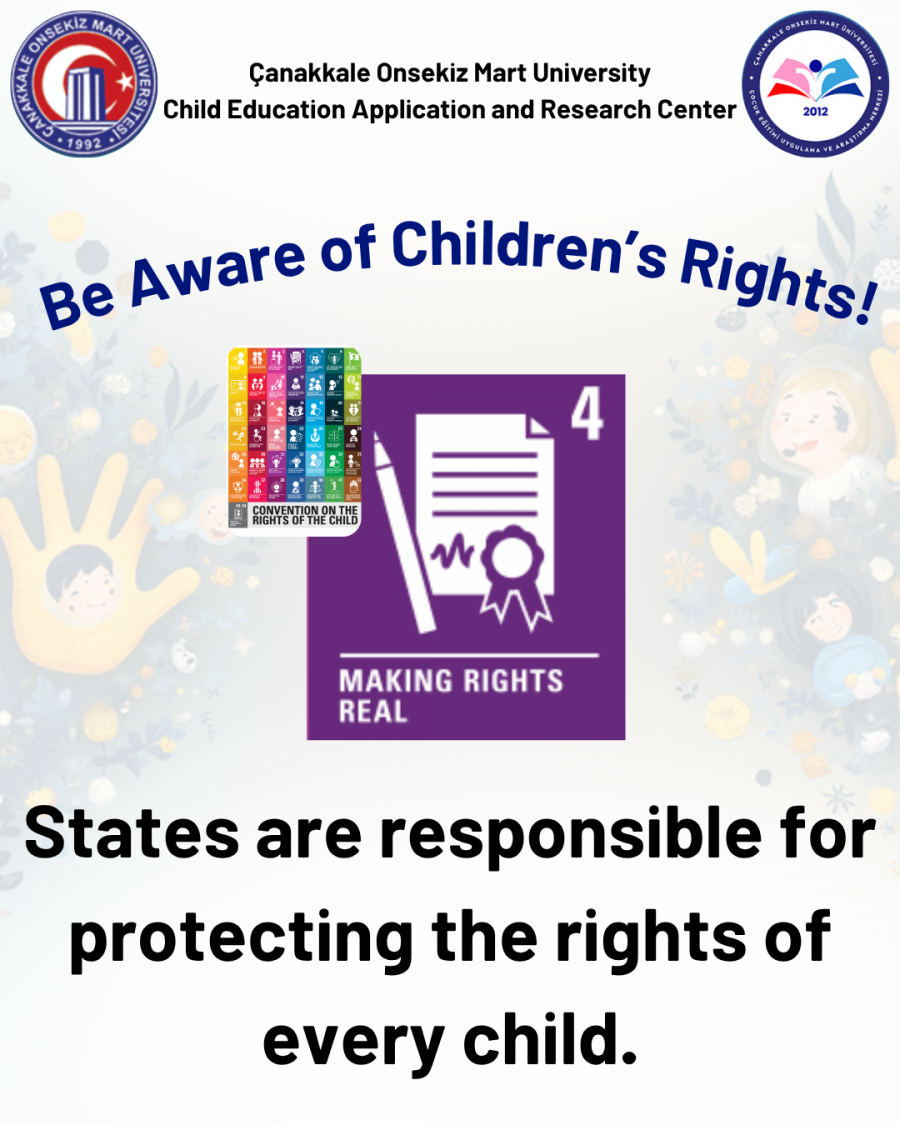


Article 4 of the United Nations Convention on the Rights of the Child establishes a clear and binding obligation for States Parties:
“States Parties shall undertake all appropriate legislative, administrative, and other measures for the implementation of the rights recognized in the present Convention. With regard to economic, social, and cultural rights, States Parties shall undertake such measures to the maximum extent of their available resources and, where needed, within the framework of international cooperation.”
This article defines the active responsibility of states not only to recognize children’s rights but to realize them through legal, economic, and political mechanisms.
The responsibility of governments extends beyond passing laws; it includes ensuring that these laws translate into real, measurable improvements in children’s lives. Ruggiero (2022) outlines this obligation under four main dimensions: legislative measures, administrative structures, capacity building and education, and independent monitoring. Kilkelly (2019) adds that “children’s rights find their true meaning not only in law, but when they take root in the values of society.” This perspective emphasizes that implementing Article 4 necessitates not only legal reform but also a cultural transformation, a collaborative effort between the state and society.
One of the most critical dimensions of Article 4 is the duty of states to use the maximum available resources for the well-being of children. Arts (2014) emphasizes that this principle encompasses both flexibility and accountability: investing in children is not a choice but an obligation, and economic challenges cannot serve as an excuse for inaction. Doek (2009) similarly stresses that a country’s allocation of resources for children reflects its steadfast commitment to children’s rights. In developing nations, however, limited resources, poverty, and political instability often constrain progress. As Onyango and Lynch (2006) note, the sustainable protection of children’s rights depends on national ownership and political will, ensuring that children’s rights are visible not only in international reports but in national policies, budgets, and decision-making processes.
Article 4 also broadens the understanding of children’s rights from an individual to a collective responsibility. The article encompasses equality, cultural diversity, and the rights of Indigenous and minority communities. Blackstock et al. (2020) demonstrate, through their work in Canada and Australia, that cultural identity is a crucial factor in protecting the rights of Indigenous children. As they put it, “for Indigenous children, well-being is tied not only to the individual but to the health of the community.” This view enriches the article’s emphasis on international cooperation, linking it to cultural respect, local knowledge, and community-based approaches rather than limiting it to financial aid.
Protecting children’s rights, therefore, cannot end with legislation. Sloth-Nielsen (2018) argues that states must establish robust monitoring and accountability systems to ensure the effective implementation of these policies. Similarly, Lansdown et al. (1996) highlight that ensuring sustainability in children’s rights requires shared responsibility, not only from governments but also from all institutions working with children. Educators, social workers, local authorities, and civil society organizations all play vital roles in fostering a living culture of children’s rights.
Ultimately, Article 4 calls on states to go beyond lawmaking and to actively protect, support, and strengthen children’s right to life and development. Darko and Dejan (2023) assert that lasting progress in children’s rights depends on strong political will, social justice, and governance that values children’s voices. A society where every child can realize their full potential stands as the truest testament to this shared responsibility.
The United Nations Convention on the Rights of the Child, adopted in 1989, marked a significant milestone in securing the rights of every child worldwide. Yet the Republic of Türkiye had already embedded this vision much earlier in its founding philosophy. Mustafa Kemal Atatürk’s approach to children extended beyond affection—it represented a moral and civic responsibility of the state. In his vision, children’s education, health, happiness, and well-being were the foundation of national progress. Long before the Convention entered into force, Atatürk laid the groundwork for a state that protects, educates, and empowers its children for the future.
This legacy continues to inspire the spirit of Article 4 today, a reminder that realizing children’s rights begins with moral conviction and collective action.
References
Arts, K. (2014). Twenty-Five Years of the United Nations Convention on the Rights of the Child: Achievements and Challenges. Netherlands International Law Review, 61, 267-303 https://doi.org/10.1017/S0165070X14001272
Blackstock, C., et al. (2020). Indigenous ontology, international law and the application of the Convention to the over-representation of Indigenous children in out of home care in Canada and Australia. Child Abuse & Neglect, 110, 104587.https://doi.org/10.1016/j.chiabu.2020.104587
Golic, D., & Logarusic, D. (2023). Child rights: International standards and their implementation in the legal system of Republic of Serbia. Law Theory & Prac., 40, 34-56. https://doi.org/10.5937/ptp2302034G
Doek, J. (2009). The CRC 20 years: An overview of some of the major achievements and remaining challenges. Child Abuse & Neglect, 33, 771-782. https://doi.org/10.1016/j.chiabu.2009.08.006
Kilkelly, U. (2019). The UN convention on the rights of the child: incremental and transformative approaches to legal implementation. The International Journal of Human Rights, 23(3), 323-337, https://doi.org/10.1080/13642987.2018.1558974
Lansdown, G., Waterston, T., & Baum, D. (1996). Implementing the UN Convention on the Rights of the Child. BMJ, 313(7072), 1565-1566.
Onyango, P. & Lynch, M. (2006). Implementing the right to child protection: a challenge for developing countries. Lancet, 367, 693–694.
Ruggiero, R. (2022). Article 4: States Parties’ Obligations. In: Vaghri, Z., Zermatten, J., Lansdown, G., Ruggiero, R. (eds) Monitoring State Compliance with the UN Convention on the Rights of the Child. Children’s Well-Being: Indicators and Research, vol 25. Springer, Cham. https://doi.org/10.1007/978-3-030-84647-3_41
Sloth-Nielsen, J. (2018). Monitoring and Implementation of Children’s Rights. In: Kilkelly, U., Liefaard, T. (eds) International Human Rights of Children. International Human Rights. Springer, Singapore. https://doi.org/10.1007/978-981-10-3182-3_2-1
Dr. Sezen ÇİÇEK APAYDIN
November 10, 2025